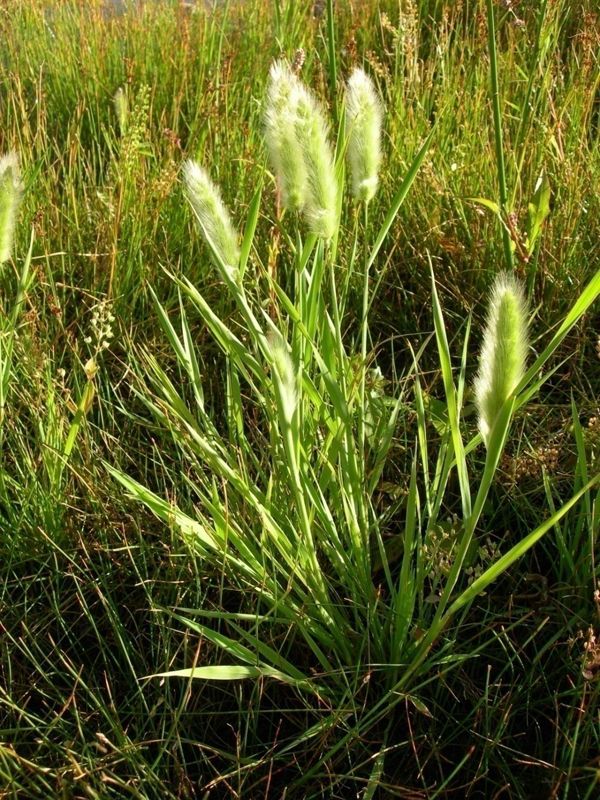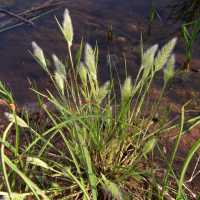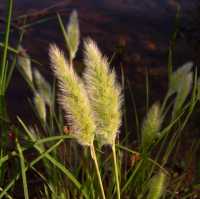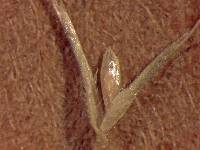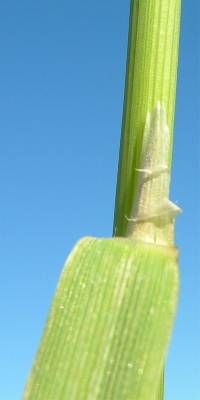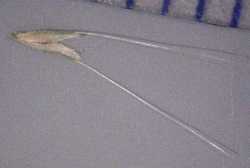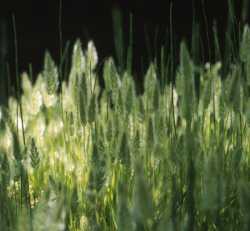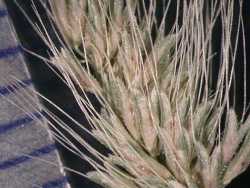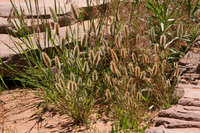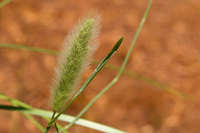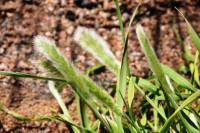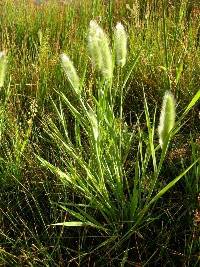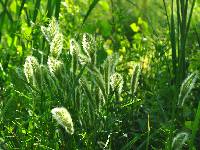|
Family: Poaceae
annual rabbitsfoot grass
[Alopecurus monspeliensis L.] |
Erect or ascending annual 1-4 dm; main lvs 3-8 mm wide, rather short, scaberulous; infl ovoid-cylindric to cylindric, 2-5 נ1 cm, excluding the awns, tawny at maturity; glumes 2 mm, silky, shortly 2-lobed; awn rough, 3-6 mm; lemma 1 mm, its delicate, fragile awn 0.4-0.7 mm; 2n=28. Native of Europe, established in waste places throughout most of our range, especially southward.
Gleason, Henry A. & Cronquist, Arthur J. 1991. Manual of vascular plants of northeastern United States and adjacent Canada. lxxv + 910 pp.
©The New York Botanical Garden. All rights reserved. Used by permission. FNA 2007, Cronquist et al. 1977, Gould 1980 Common Name: annual rabbitsfoot grass Duration: Annual Nativity: Non-Native Lifeform: Graminoid General: Introduced annual grass with glabrous or scabrous herbage, stems geniculate and decumbent at base, 8-100 cm. Vegetative: Sheaths open, smooth to scaberulous; blades flat, 3-6 mm wide, 2-15 cm long; ligule membranous, acute, lacerate at tip, 2-6 mm long. Inflorescence: Dense panicle, often spikelike, mostly 2-15 cm, densely flowered with tawny awns, terminal on long stem, spikelike and short, dense branches below; glumes narrow one nerved with straight awn 4-7 mm long from entire or slightly notched apex; lemma and palea thin, translucent, slightly exceeding caryopsis, lemma with delicate, deciduous awn 1 mm long, caryopsis plump, 1 mm long. Ecology: Sandy soil along streams, moist ditches and waste places; 500-8,000 ft (152-2438 m). Flowers March-October. Distribution: Cosmopolitan; introduced to the new world from the old world; spread throughout most of the Americas, from CAN, most of the US; south to S. America. Notes: Polypogons have dense inflorescences bearing single-seeded spikelets with equal length glumes which are longer than the florets. This species is distinguished from others in the genus by being an erect annual growing by streams and in wet areas, with a very dense spike-like inflorescence of soft, long-awned spikelets. The dense spikelets and awns give the inflorescence a whitish-silvery look and a silky feel, hence the common name "rabbit's foot grass." Ethnobotany: Infusion of ashes taken as heart medicine, used for food, and as a soap. Etymology: Polypogon is from Greek polys, many and pogon, beard, while monspeliensis is thought to be derived from Montpellier in southern France. Synonyms: Alopecurus monspeliensis Editor: SBuckley 2010, FSCoburn 2014, AHazelton 2015 |

